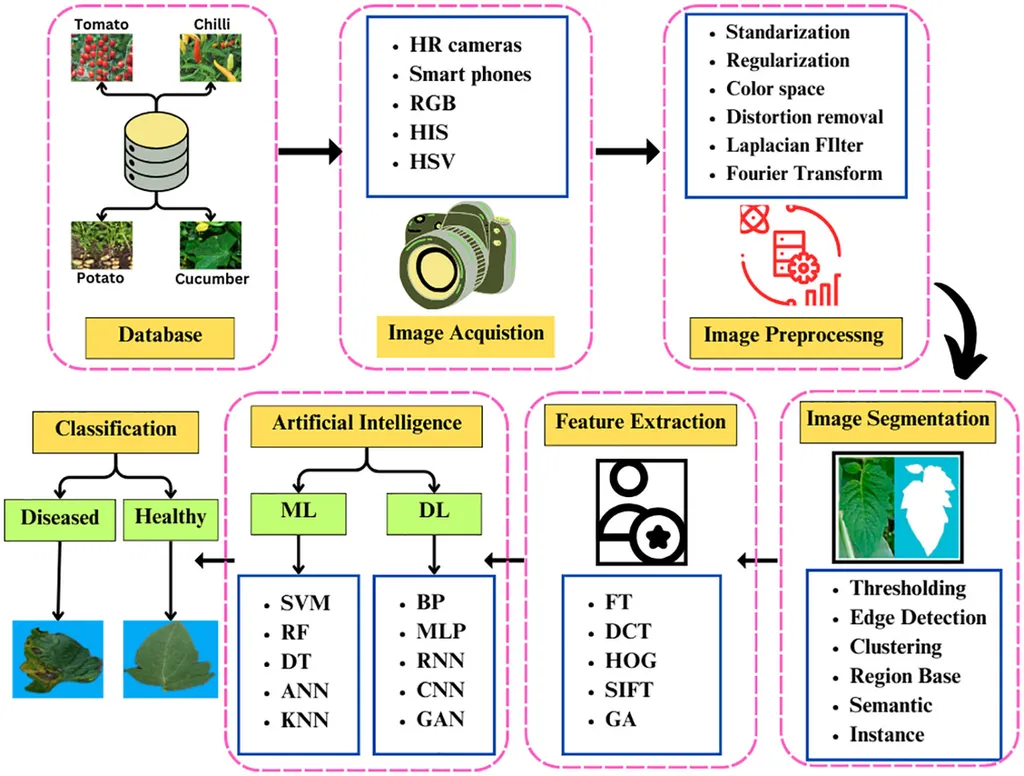In the world of microbiology, the age-old challenge of selecting the right culture medium for bacterial growth has often been a game of trial and error. But what if machine learning could streamline this process, saving time, resources, and potentially revolutionizing agricultural applications? A recent study published in *Microbial Biotechnology* has taken a significant step in this direction.
Researchers, led by Jianhan Liu from the State Key Laboratory of Animal Nutrition and Feeding at the Chinese Academy of Agricultural Sciences, have developed a novel approach to predict bacterial growth on different culture media using the XGBoost algorithm. By analyzing nutrient compositions from the MediaDive database and leveraging microbial 16S rRNA sequences, the team constructed a dataset of 2,369 media types. They then built 45 binary classification models, achieving impressive accuracies ranging from 76% to 99.3%.
The top-performing models, particularly for J386, J50, and J66 media, demonstrated remarkable predictive capabilities. “Our models effectively predicted growth conditions for various human gut microbes, confirming their practical utility,” Liu explained. This breakthrough could have profound implications for the agriculture sector, where microbial cultivation is crucial for processes like biofertilizer production, soil health management, and crop protection.
The use of machine learning in microbiology is not entirely new, but the precision and efficiency achieved in this study are noteworthy. The XGBoost algorithm, known for its speed and performance, has proven to be a powerful tool in this context. “The models not only save time but also reduce the need for extensive empirical testing, making the process more cost-effective,” Liu added.
The commercial impacts of this research are substantial. For instance, in the agriculture industry, the ability to quickly and accurately predict the best culture media for specific microbes can enhance the production of beneficial bacteria used in biofertilizers. This can lead to improved crop yields and reduced reliance on chemical fertilizers, promoting sustainable farming practices.
Moreover, the study highlights the potential of machine learning to optimize culture media selection, a critical step in microbiological research. As Liu noted, “This research improves the efficiency of microbial cultivation and highlights the potential of machine learning to advance microbiological studies.” The findings could pave the way for further innovations in the field, such as the development of customized culture media tailored to specific microbial strains.
In the broader context, this research underscores the growing role of artificial intelligence and machine learning in scientific discovery. As these technologies continue to evolve, their integration into traditional scientific methods could unlock new possibilities and drive progress in various fields, including agriculture.
The study published in *Microbial Biotechnology*, led by Jianhan Liu from the State Key Laboratory of Animal Nutrition and Feeding at the Chinese Academy of Agricultural Sciences, represents a significant advancement in the intersection of microbiology and machine learning. By harnessing the power of the XGBoost algorithm, researchers have developed a robust tool for predicting bacterial growth on different culture media, with far-reaching implications for the agriculture sector and beyond. As the field continues to evolve, the potential for further innovations and applications seems limitless.

